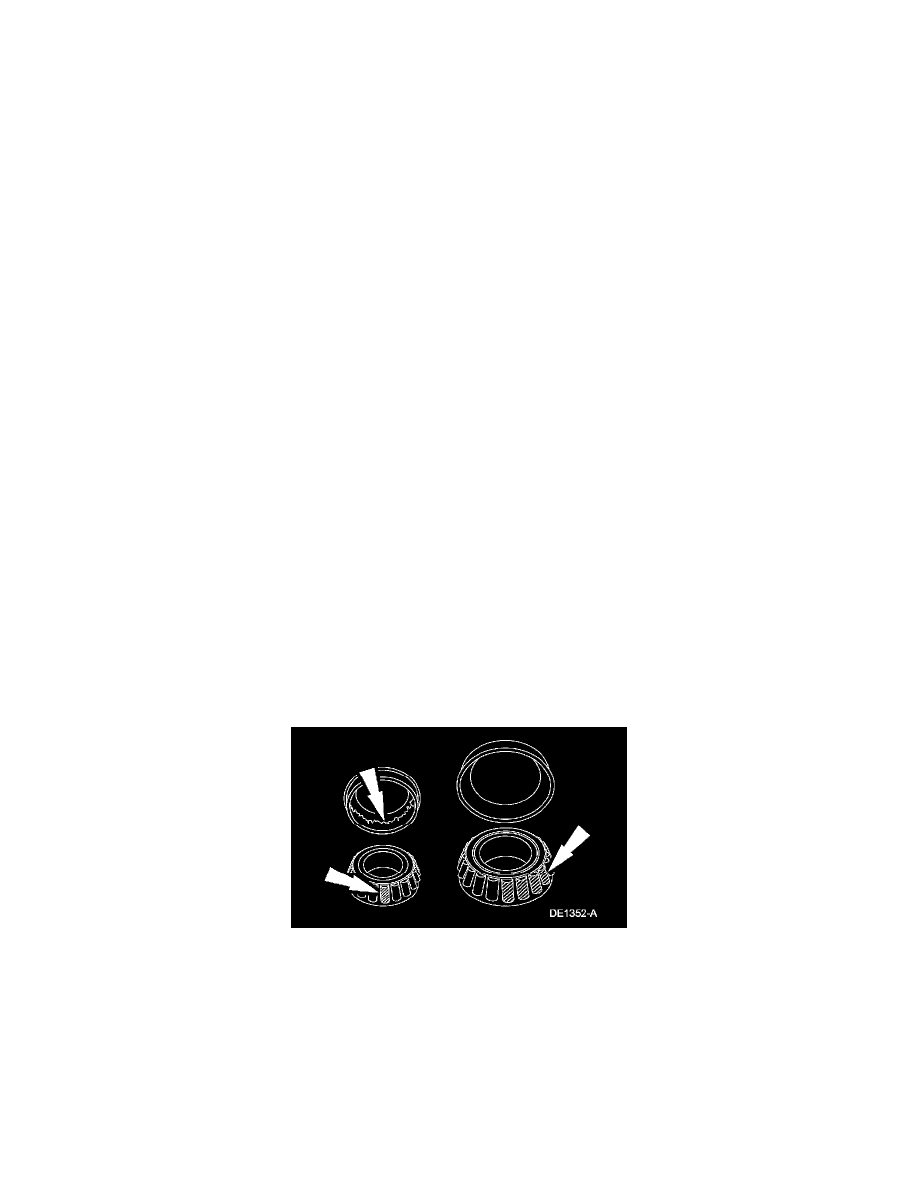E 250 V8-4.6L VIN W (2006)

2. Rotate the flange one full turn and note the maximum and minimum readings. The difference between the maximum and minimum readings will be
the total face runout. The runout must not exceed 0.13 mm (0.005 in).
3. Full float axles in E-350 and E-450 models have hubs, which have the same 0.13 mm (0.005 inch) limit on the flange lateral runout.
Drive Pinion Stem and Pinion Flange
Check the pinion flange runout when all other checks have failed to show the cause of vibration.
One cause of excessive pinion flange runout is incorrect installation of the axle drive pinion seal. Check to see if the spring on the seal lip has been
dislodged before installing a new ring gear and pinion.
Coupling Shaft Center Bearing Alignment 158 and 176 Inch Wheelbase
Vehicle noise and vibration can be caused by a dislocated/failed driveshaft center bearing support rubber insulator, a contaminated driveshaft center
bearing support or excessive compression of the rubber insulator.
Bearing Shimming
Drive-away shudder is the predominant symptom associated with driveline angle conditions on vehicles with 2-piece driveshafts. Drive-away shudder
can usually be corrected by shimming down the driveshaft center bearing bracket.
If the drive-away shudder cannot be corrected by shimming down the driveshaft center bearing bracket, check the driveline angles as described in the
General Procedures.
Axle Noise
NOTE: Before disassembling the axle to diagnose and correct gear noise, eliminate the tires, exhaust, trim items, roof racks, axle shafts and wheel
bearings as possible causes. Follow the diagnostic procedures in Vehicle/Testing and Inspection.
The noises described as follows usually have specific causes that can be diagnosed by observation as the unit is disassembled. The initial clue is the
type of noise heard during the road test.
Gear Howl and Whine
Howling or whining of the ring gear and pinion is due to an incorrect gear pattern, gear damage or incorrect bearing preload.
Bearing Whine
Bearing whine is a high-pitched sound similar to a whistle. It is usually caused by worn/damaged pinion bearings, which are operating at driveshaft
speed. Bearing noise occurs at all driving speeds. This distinguishes it from gear whine, which usually comes and goes as speed changes.
As noted, pinion bearings make a high-pitched, whistling noise, usually at all speeds. If, however, there is only one pinion bearing that is
worn/damaged, the noise may vary in different driving phases. New pinion bearings must not be installed unless they are scored or damaged or there is
a specific pinion bearing noise. A worn/damaged bearing will normally be obvious at disassembly. Examine the large end of the rollers for wear. If the
pinion bearing's original blend radius has worn to a sharp edge, the pinion bearing must be installed new.
NOTE: A low-pitched rumble normally associated with a worn/damaged wheel bearing can be caused by the exterior luggage rack or tires.
Wheel bearing noise, though usually lower pitched, can be mistaken for a pinion bearing noise. Check the wheel bearing for a spalled cup and
spalled/damaged rollers. Install a new wheel bearing if any of these concerns are detected.
